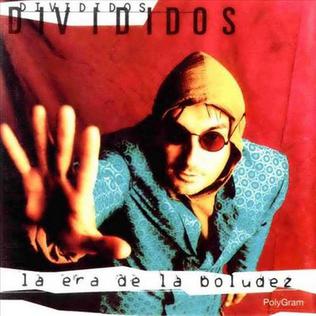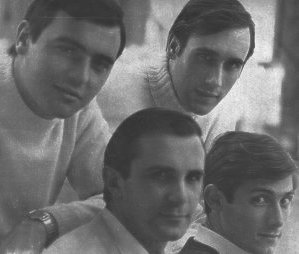
The music of Argentina includes a variety of traditional, classical and popular genres. One of the country's most significant cultural contributions is the tango, which originated in Buenos Aires and its surroundings during the end of the 19th century and underwent profound changes throughout the 20th century. Folk music was particularly popular during the 20th century, experiencing a "boom" in popularity during the 1950s and 1960s thanks to artists such as Atahualpa Yupanqui and Mercedes Sosa, prominent figures of the Nuevo cancionero movement. In the mid-to-late 1960s, the countercultural scene of Buenos Aires originated Argentine rock, considered the earliest incarnation of Spanish-language rock for having an autochthonous identity that differed from that of England or the United States. It was widely embraced by the youth and since then has become part of the country's musical identity as much as traditional music. According to the Harvard Dictionary of Music, Argentina also "has one of the richest art music traditions and perhaps the most active contemporary musical life.

Atahualpa Yupanqui was an Argentine singer, songwriter, guitarist, and writer. He is considered the most important Argentine folk musician of the 20th century.

The Chacarera is a dance and music that originated in Santiago del Estero, Argentina. It is a genre of folk music that, for many Argentines, serves as a rural counterpart to the cosmopolitan imagery of the Tango. A dance form played by contemporary musicians as soloists or in small ensembles of voice, guitar, violin and bombo drum, the Chacarera is often legitimized by its “origin” in the remote province of Santiago del Estero.

Pongo en tus manos abiertas is the fourth studio album by Chilean singer-songwriter Víctor Jara, released in June 1969. It was the third album released by the Jota Jota record label, established by the Communist Youth to release Nueva canción chilena artist recordings such as Quilapayún, who also collaborated in the musical accompaniment of some tracks.

La era de la boludez [Age of stupidity] is a studio album released in 1993 by Argentine rock band Divididos. It contains a lot of the most famous songs by the group, as "El arriero", "¿Qué ves?" and "Salir a comprar". It is the best-selling album of Divididos, selling over 480,000 copies.

César Isella was an Argentinian singer and songwriter of folk music. He joined Los Fronterizos from 1956 to 1966, was one of the main figures of the "Movement of the New Songbook", and in the 1990s he discovered and sponsored the singer Soledad Pastorutti. He has written the music for "Canción con todos", regarded as the Latin American anthem.
Antonietta Paule Pepin Fitzpatrick, also known as Nenette, was a French composer, pianist and lyricist.

Mercedes Sosa en Argentina is a double album by Argentine singer Mercedes Sosa. It was recorded live at the Teatro Opera de Buenos Aires in February 1982 and released on the Philips label. In 2017, it was selected by NPR as one of the "150 Greatest Albums by Women".

Una Voz y una Guitarra is an album by Argentine singer and guitarist Atahualpa Yupanqui. It was released in October 1953 on the Odeon label. It was Yupanqui's first album. It was the No. 1 album in Argentina in its year of release.
Camino del Indio is both a song and an album by Argentine singer and guitarist Atahualpa Yupanqui.

Solo de Guitarra, Volumen No. 6 is an album by Argentine singer and guitarist Atahualpa Yupanqui. It was released in 1958 on the Odeon label. It was the No. 1 album in Argentina in 1958.

Solo de Guitarra, Volumen No. 3 is an album by Argentine singer and guitarist Atahualpa Yupanqui. It was released in 1956 on the Odeon label.

Canto y Guitarra, Volumen No. 5 is an album by Argentine singer and guitarist Atahualpa Yupanqui. It was released in 1958 on the Odeon label.

¡Soy Libre! ¡Soy Bueno! is an album by Argentine singer and guitarist Atahualpa Yupanqui. It was released in 1968 on the Le Chant du Monde label.

Canción para Pablo Neruda is an album by Argentine singer and guitarist Atahualpa Yupanqui. It was released in 1975 on the Le Chant du Monde label.

Canto y Guitarra, Volumen No. 4 is an album by Argentine singer and guitarist Atahualpa Yupanqui. It was released in 1957 on the Odeon label.

Arenita del Camino, Volumen No. 9 is an album by Argentine singer and guitarist Atahualpa Yupanqui. It was released in 1961 on the Odeon label.

La voz de la zafra is the debut album by Argentine singer Mercedes Sosa. It was recorded in 1961 and released in 1962 on the RCA Victor Argentina label. The album, as originally issued, included 12 songs. Eight of the songs were composed by Armando Tejada Gómez and Manuel Óscar Matus, Sosa's husband. It was reissued in multiple countries and under other titles, including Canta Mercedes Sosa and Mercedes Sosa.

Cuarteto Zupay or simply Los Zupay, was an Argentinian Popular Music group formed in Buenos Aires in 1966 that remained active until 1991. The founding members were the brothers Pedro Pablo García Caffi (baritone) and Juan José García Caffi, Eduardo Vittar Smith (bass) and Aníbal López Monteiro.

The folkloric music of Argentina traces its roots to the multiplicity of native indigenous cultures. It was shaped by four major historical-cultural events: Spanish colonization and forced African immigration caused by the slave trade during the Spanish domination ; the large wave of European immigration (1880–1950) and the large-scale internal migration (1930–1980).


















